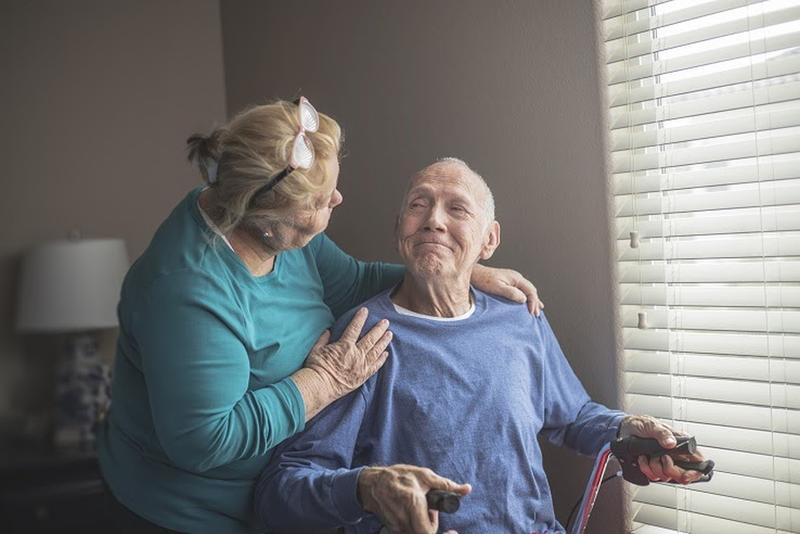
If you or someone you love has been diagnosed with a terminal illness, it’s natural to worry and wonder about what kind of medical care will be needed in the final months of life. Depending on the illness and the estimated time remaining, hospice care may be an option. The term actually covers a range of care methods, usually depending on the wishes of the patient and the immediate family, although some illnesses may require very specific types of care. Care examples include professional care provided around the clock at home and professional care provided at a hospice care facility.
Regardless of the specifics, the primary purpose of hospice care is to make the patient as comfortable as possible in the final days, weeks or months of life. However, to receive this much-needed assistance, patients must meet a certain level of medical need based on specific requirements. Here’s what you need to know about the different types of hospice care, including information about the requirements for inpatient facilities and payment.
Breaking Down the Four Types of Hospice Care
Hospice care actually includes four different types of care designed exclusively for terminally ill patients — usually those with six months or less to live. Families don’t necessarily choose a care type based on the seriousness of the patient’s current condition. In many cases, the patients are seniors with Medicare insurance, and their insurance may dictate the type of care that is covered by the policy. In other cases, specific health conditions may require a specific type of care to keep the patient comfortable.

Level one hospice care is routine home care that allows the patient to remain at home with family. A skilled nurse or hospice worker visits regularly to provide help with personal care and make sure the patient is comfortable. The provider may also offer additional services, such as speech therapy, occupational therapy or physical therapy, to help make day-to-day life more comfortable.
Level two hospice care involves continuous home care for anywhere from eight hours a day to the full 24-hour period. During these periods, at least 50% of the patient’s care is provided by a nurse. Families sometimes alternate between level one and level two hospice care as the patient’s need for care improves or worsens.
Level three hospice care refers to care that takes place in an inpatient setting at a hospice care facility. The care needs of a level three hospice patient may be similar to those of a level two patient, such as assistance with severe pain, nausea and vomiting, shortness of breath, anxiety and panic, or other problems that are harder to care for at home.
Level four hospice care is respite care that occurs when a family temporarily admits a patient to an inpatient facility to give family members who are acting as primary caregivers a break. It could be that the family can’t care for the patient for a time due to another crisis or for personal reasons. This level of hospice care generally has more to do with the family than the patient, but it does benefit the patient by providing ongoing care when their family can’t do it themselves.
Paying for Hospice Care Coverage
Regardless of the type of hospice care chosen by your family, the care will be too costly for most people to pay the full expense out of pocket. Patients who are older than 65 should be receiving Medicare insurance benefits. Medicare Part A (hospitalization insurance) includes a Medicare Hospice Benefit to help cover costs for patients officially diagnosed as terminal by a physician.

Patients who have served in the military can use Veterans’ Administration (VA) benefits to pay for hospice care. Those with low income and minimal resources may qualify for Medicaid insurance benefits to help pay for services. Medicaid eligibility varies by state and must be applied for through the state. Private insurance often includes provisions for hospice care, but this coverage can vary as well.
Qualifying for Inpatient Hospice Care Services
As patients approach the end of their lives — particularly those who suffer from some form of dementia like Alzheimer’s disease — they are often more comfortable in their own homes. For that reason, level one and level two hospice care are usually preferred over inpatient services, but if a patient’s health begins to deteriorate quickly and the nurse or the patient’s family can’t properly provide comfort and care at home, then the patient should be moved to an inpatient setting.

In general, a patient needs to be experiencing serious health complications to qualify. Examples include situations with uncontrollable pain, respiratory distress, uncontrollable seizures, acute anxiety, severe depression, progressive delirium or a need for intravenous (IV) medications. In some cases, the symptoms could be temporary, with patients only needing inpatient care for a short period of time. In those cases, they may be able to complete hospice care back in their home environment for maximum comfort.





